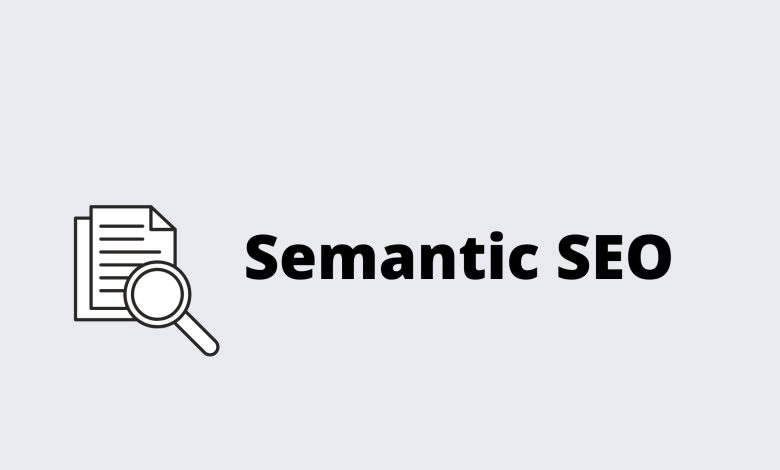
The concept of semantic SEO is not a new one, but it is one that has taken on a renewed importance in the digital age. With Google’s ever-changing search engine algorithms, it is more important than ever to ensure that your website content is not only high quality and informative but also correctly structured and keyword-rich. Semantic SEO techniques help you to do just that. In this blog post, we’ll explain what semantic SEO is and how you can use it to improve your website’s ranking. Stay tuned for more information on this exciting topic!
How To Use Semantic SEO For Higher Rankings?
Let us first understand what semantic SEO is. Semantic Search Engine Optimization refers to structuring your website content in a way that both the search engine and the human readers can easily apprehend and understand its meaning through their respective means of interaction with it. Structured content will always outrank non-structured content but it isn’t as simple as just making all your web content structured – you also need to include the relevant keywords and words that people are likely to search for.
Search Engines Read Structured Content Differently
The human mind can easily understand unstructured text, but search engines cannot simply use the same process as humans do. Search engines read structured web page content differently than unstructured content. Search engines crawl unstructured content. Whereas they read structured web page content with their own specific algorithms in order to understand the context of that page and then rank it accordingly.
The Importance Of Semantic SEO For Ranking
Google has always emphasized quality content as an important ranking factor because a high-quality site will offer more value to the user and Google can easily return such high-quality pages in its results. To achieve this, search engines need all web content to be structured meaningfully. And with a focus on what you want your site visitors (and Google) to know about your business/products/services etc.
You Can Create Your Own Structured Web Content
Google says that the web content it indexes should be “text-based HTML pages”. This means there is nothing special in creating your own structured web page content. As long as you include relevant text on your page. You can also add in further attributes like heading tags for easier navigation between different sections of your site. You can even use schema.org structured data to add semantic markup to your web page.
What Is Semantic Markup?
Semantic markup is a process of annotating content with meta-information and in turn, adding meaning and context to that content. This helps the search engine crawlers understand what kind of entity you are writing about and then rank it accordingly.
Most Common Types Of Semantic Markup
There are two types of semantic markup that website owners use today – Microdata and RDFa. These are the most commonly used methods of semantic markup.
Microdata is a collection of HTML attributes for adding semantics to various elements on web pages so your search engine can understand them better. Schema.org defines a vocabulary of microdata elements and attributes that you can use to annotate your data.
RDFa (Resource Description Framework in Attributes) is an enhancement over HTML. And gives users more power to define their web content. It enables you to assign multiple semantic annotations to web documents, enhancing it’s search engine friendliness.
How To Add The Right Semantic Markup To Your Site
Search engines have a specific set of guidelines for adding semantic markup to your website. Here are a few things you must keep in mind while doing so:
1. Use Schema Markup For Content Types Google has been asking webmasters to add schema markup for different types of content including local businesses, people, movies, music albums, etc. So if your website covers any of these topics then adding semantic markup is a must for you.
2. Add Schema Markup For Specific Pages It’s important that you add semantic markup to specific pages on your site too – not just the homepage. This includes the product, article, and even your contact page.
3. Use The Right Titles For Semantic Markup Titles are a must for adding semantic markup to your website and it is the first thing Google uses to understand what kind of entity you are marking up on a page. So make sure to use proper titles and avoid using generic ones like “Home”, “Page 1” etc.
4. Ensure You Have The Right Information Schema markup helps search engines to understand what information you are trying to convey in a section of your website, but adding the wrong information might harm your site progressively. So ensure that the type of entity you are marking up is accurate and that all its properties have been filled out properly for better indexing.
5. Don’t Forget To Test Your Work Here is a small checklist that will help you test if your semantic markup has been correctly added to your website: 1. Use the “Structured Data Testing Tool” provided by Google and enter your URL to check for errors. 2. Open up a Google search and make sure your type of entity shows up in the search results. 3. Use “Google Structured Data Markup Validator” to see if there are any errors or problems with your markup and fix them accordingly.
Conclusion
The Future belongs to those who can embrace semantic markup and make their website future-ready. With all the benefits it brings, you should start using this SEO technique as soon as possible.